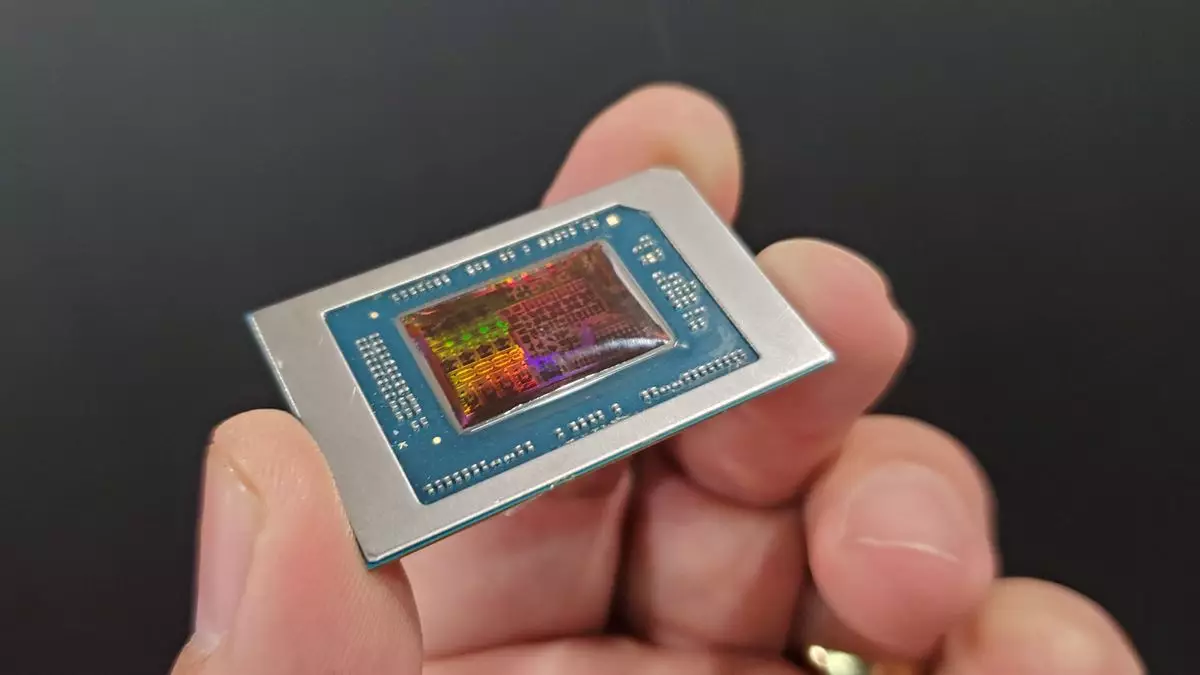AMD has long been a leader in the semiconductor industry, continuously pushing the envelope with its innovative technology. The latest addition to their impressive lineup is the Strix Point APU, a versatile chip that is making waves in the realm of laptops and handheld PCs, such as the Razer Blade 16 and OneXPlayer OneXFly F1 Pro. However, it’s not just portable devices that will benefit from this remarkable chip. Early speculations hint at an impending desktop variant scheduled for release in late 2025, offering the same robust features that have made Strix Point a hit among mobile users.
Desktop Prospects: Strix Point’s Transition to Ryzen 9000G
Reports suggest that AMD aims to rebrand the desktop iteration of Strix Point as the Ryzen 9000G series, possibly incorporating artificial intelligence into the nomenclature, with a suggested name like Ryzen AI 9000G. This strategic branding shift illustrates AMD’s commitment to integrating AI capabilities into its products, emphasizing a forward-thinking approach that aligns with market trends. The desktop variant is projected to maintain the core architecture of the mobile chip and will feature up to 12 Zen 5 CPU cores—an impressive mix of four full Zen 5 cores and eight compact Zen 5c cores—redefining what we can expect from mini PCs.
The Graphics Game: RDNA 3.5 and NPU Capabilities
On the graphics front, the Strix Point APU boasts 16 RDNA 3.5 compute units, setting a new standard for integrated graphics in small form-factor systems. Coupled with an AI-accelerating Neural Processing Unit (NPU) rated at 55 TOPS (Tera Operations Per Second), this chip is engineered to streamline tasks that rely heavily on AI, transcending the limitations seen in traditional processors. While it may not compete with dedicated high-end gaming setups, the chip delivers admirable performance for everyday users and casual gamers, making it a perfect candidate for mini PC enthusiasts.
Compatibility and Performance Expectations
Another compelling aspect of the Strix Point APU is its compatibility with the AM5 socket, ensuring that this remarkable chip can slot seamlessly into a variety of existing motherboards. This feature will undoubtedly appeal to those considering an upgrade: swapping out a Ryzen 8000G series chip for Strix Point should be a straightforward process. While performance expectations for the desktop version suggest higher clock speeds compared to its laptop counterparts, it remains clear that for hardcore gamers, the traditional CPU plus discrete GPU combination will still reign supreme. However, for consumers seeking power and efficiency in a compact package, Strix Point is set to deliver.
The Mini PC Revolution: A Look Ahead
The potential applications for the Strix Point APU extend beyond conventional mobile usage. Its capabilities are ideally suited for mini PCs, such as the anticipated Ayaneo Retro Mini PC AM01S, which plans to utilize this next-generation chip. Such systems promise to offer a functionally portable experience without sacrificing performance. In a world where space is a premium, mini PCs powered by Strix Point could represent a significant shift, facilitating a new wave of compact computing solutions that can be customized for both professional and recreational use.
Price Speculations and Market Dynamics
As we await official announcements about the launch and pricing of the Strix Point desktop variant, speculation suggests that it may provide a cost-effective alternative to similarly performing mobile processors. Traditionally, mobile chips command a premium due to their compact design and cooling solutions. A desktop variant that retains the virtues of its mobile sibling but comes at a more accessible price point could redefine the landscape of budget-friendly compact PCs.
Ultimately, with AMD’s Strix Point APU, potential seems boundless. Whether it’s optimizing everyday computing tasks or offering improved gaming experiences within compact setups, this chip is poised to reshape our understanding of performance in small form factors. The anticipated developments in the coming years promise to keep AMD in the spotlight as a leading innovator in the computer hardware space.

